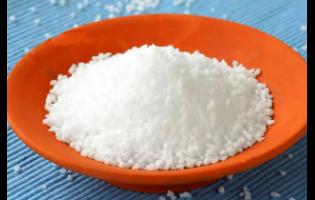Check-Up: Can exercise help someone with chronic illnesses?
Dear Readers,
T.D. is a middle-age gentleman who lives in the Kingston 8 area. He has to cope with chronic diseases such as hypertension, obesity, heart disease, and even a bit of arthritis.
He asks Check Up, “How do you use exercise as treatment for the chronic illnesses?”
If you have a chronic disease, then exercise can have important health benefits for you. Once there is a chronic illness, there may be some health limitations to exercise. Regular exercise can help you feel better and improve your symptoms, as well as actually improving your health.
Studies have shown that regular physical exercise not only tends to decrease the debility associated with illnesses, but also decreases the costs needed to support the healthcare of the person involved.
Increasingly, facts point to exercise therapy in persons with chronic diseases, increasing fitness and even correcting some risk factors which are associated with developing disease complications.
What is of importance is that muscle strength can be improved in individuals who have many chronic illnesses without worsening the disease and complications due to exercising are rare.
In osteoarthritis, pain may very well be reduced, while exercise is actually found to reduce death rates in individuals who suffer with heart disease and heart failure.
Exercise is also very beneficial for people with type 2 diabetes and is shown to lower blood cholesterol levels, blood pressure levels.
Exercise has an overall benefit in preventing progression of several diseases.
Heart disease – Regular exercise will improve heart health and has significant benefits with lowering the blood pressure, lowering the progressing of heart disease and lowering the risk of dying from heart disease.
Arthritis – Exercise can reduce joint pain as well as strengthen muscles surrounding the affected joints to give better support to the joints. It reduces joint stiffness and can certainly improve the quality of life being experienced.
Back pain – Low-impact aerobics can increase back muscle strength and improve muscle function. Strengthening core muscles around the spine will give support to the back and help ease pain.
Diabetes – Regular exercise will burn blood sugar and even lower your weight, allowing for better use of the hormone insulin in your body to also lower blood sugar levels. This can lower the risk of developing heart disease and lower death rates. Physical activity reduces insulin resistance and lowers glucose intolerance.
Dyslipidemia (abnormal amount of fat and/or cholesterol) – Exercise lowers bad fats and increases good fats in the blood stream.
Asthma – Regular exercise can help control the frequency and severity of asthma attacks.
Dementia – Exercise seems to help retard the progression of dementia, and people who exercise seem to be at less risk of developing dementia and memory loss.
Cancer – Exercise is thought to lower the risk of developing colorectal, breast and prostate cancers. It also improves the quality of life for people who are fighting cancer.
Depression – Exercise improves self-image and produces feel good hormones to help lift depression.
Obesity – Physical activity is a tried-and-true method to reduce obesity.
- If you have a chronic disease or are health-impaired in any way, you should visit your doctor or even a physical therapist to discuss what form of exercise is best for you.
- If you have low back pain, swim or walk to prevent straining your back.
- If you have exercise-induced asthma, remember to use your inhaler before exercising.
- If you have heart disease, talk with your doctor about the length and intensity of your exercise programme, and what signs indicate that you need to curtail your activity, such as dizziness.
- If you are diabetic, you will need to check on the blood sugar more often to see if exercise is lowering the amount of medication which needs to be taken.
- Any bone disorder will require proper supportive shoes to be worn during exercise.
- Strength training is particularly important in individuals with osteoporosis (brittle bones).
Try to do at least a half-hour of exercise five days a week, which should include stretches before and after the exercise itself.
But any exercise is good; even just an hour a week is better than none at all!
Write Check Up: PO Box 1731, KGN 8 Email: arnaj56@gmail.com AJM






































